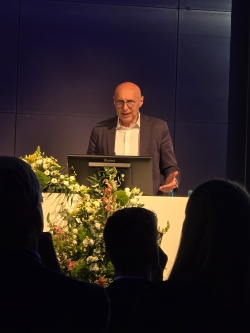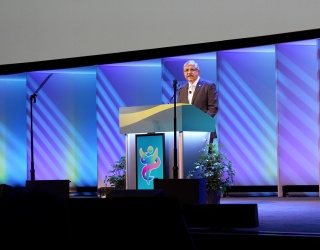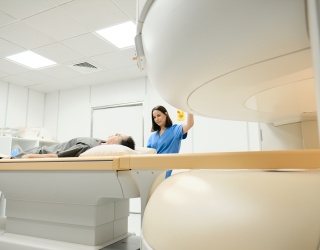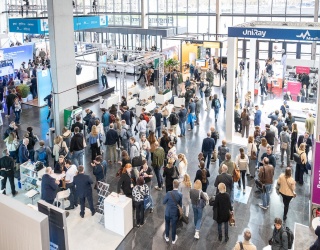The German Radiology society sets a clear agenda: to assess the current state of radiology amidst rapid technological advances, the growing influence of artificial intelligence, and a very practical question – how can physicians remain in control through it all?
“Curiosity is My Inner Engine”
The opening keynote came from none other than Nobel Laureate Prof. Dr. Stefan W. Hell, Director at the Max Planck Institute for Multidisciplinary Sciences. Awarded the 2014 Nobel Prize in Chemistry for developing STED microscopy, Hell revolutionized the resolution limits of light microscopy, making the invisible visible.
“My goal has always been to make the invisible visible,” said Hell, captivating the audience with understated humor and intellectual humility. He traced his journey from childhood in the Banat region of Romania, through academic training in Heidelberg, to his groundbreaking discovery – underscoring a lifelong drive to understand. “You can’t always answer life’s big questions immediately. But those who stay curious are often rewarded.”
At the same time, Hell reminded the audience that revolutionary discoveries rarely receive instant applause from within one’s own field. His message to the radiology community: Don’t be discouraged by the boundaries of today. “When I said we could push light microscopy beyond the diffraction limit, people told me it was impossible. But why, exactly, shouldn’t it be?”
This mindset - challenging the seemingly impossible – is one he believes radiology can continue to adopt as it evolves.
Radiology Between Art and Precision
Prof. Dr. med. Anna-Kathrin Hell, a respected pediatric orthopaedist and head of the Pediatric Orthopaedics Department at University Medical Center Göttingen (and also Prof. Hell’s spouse), addressed a topic still underrepresented in medicine: the structural barriers facing women in leadership – and the societal expectations surrounding career and parenthood.
“Today, 70% of medical students are women – but women remain the exception in leadership roles,” she noted. The fact that many female physicians leave the system after completing their doctoral degrees isn’t just personal choice; it reflects a lack of viable models. “As a society, we can’t afford to educate highly qualified women only to lose them halfway through their careers.”
Hell spoke candidly about the double burden of clinical work and family life. Her own story – four children, a professorship, and a Nobel laureate husband – is no fairy tale but an ongoing negotiation of priorities. “We don’t just want to ‘organize away’ our children. We want to be present for them - while still being taken seriously in our careers.”
She pointed to a structural issue: a lack of role models, inadequate support for emerging talent, low diversity in leadership, and a traditionally conservative understanding of career paths in healthcare.
Still, Hell struck an optimistic tone. Radiology, she argued, is particularly well-positioned to benefit from digitization, which offers opportunities for flexible work models and collaborative leadership. What’s needed now is the courage to embrace change – and greater visibility for those already leading by example.
Responsibility in a Time of Change
Bringing the discussion back to the clinical frontlines, Prof. Dr. Konstantin Nikolaou, President of the German Radiological Society (DRG), emphasized the need for radiology to reconsider its own identity.
“Radiologists are often the backbone of diagnostic medicine – yet they sometimes remain in the shadows of clinical practice,” said Nikolaou. Increasing visibility, fostering interdisciplinary collaboration, and taking clear stances on ethical issues are now more crucial than ever.
He also called for greater efforts to support the next generation of medical professionals – not just through technology, but through modern learning concepts, appreciative work environments, and attractive career pathways. “We shouldn’t criticize young professionals for having different values. We need to understand them.”
Conclusion: A Congress with Purpose
The opening of RöKo 2025 demonstrated that radiology is far more than image interpretation. It is a field of intellectual depth, ethical responsibility, and immense future potential. The powerful combination of Nobel-level science, clinical realism, and personal integrity made for a compelling opening - setting the tone for the days to follow.










